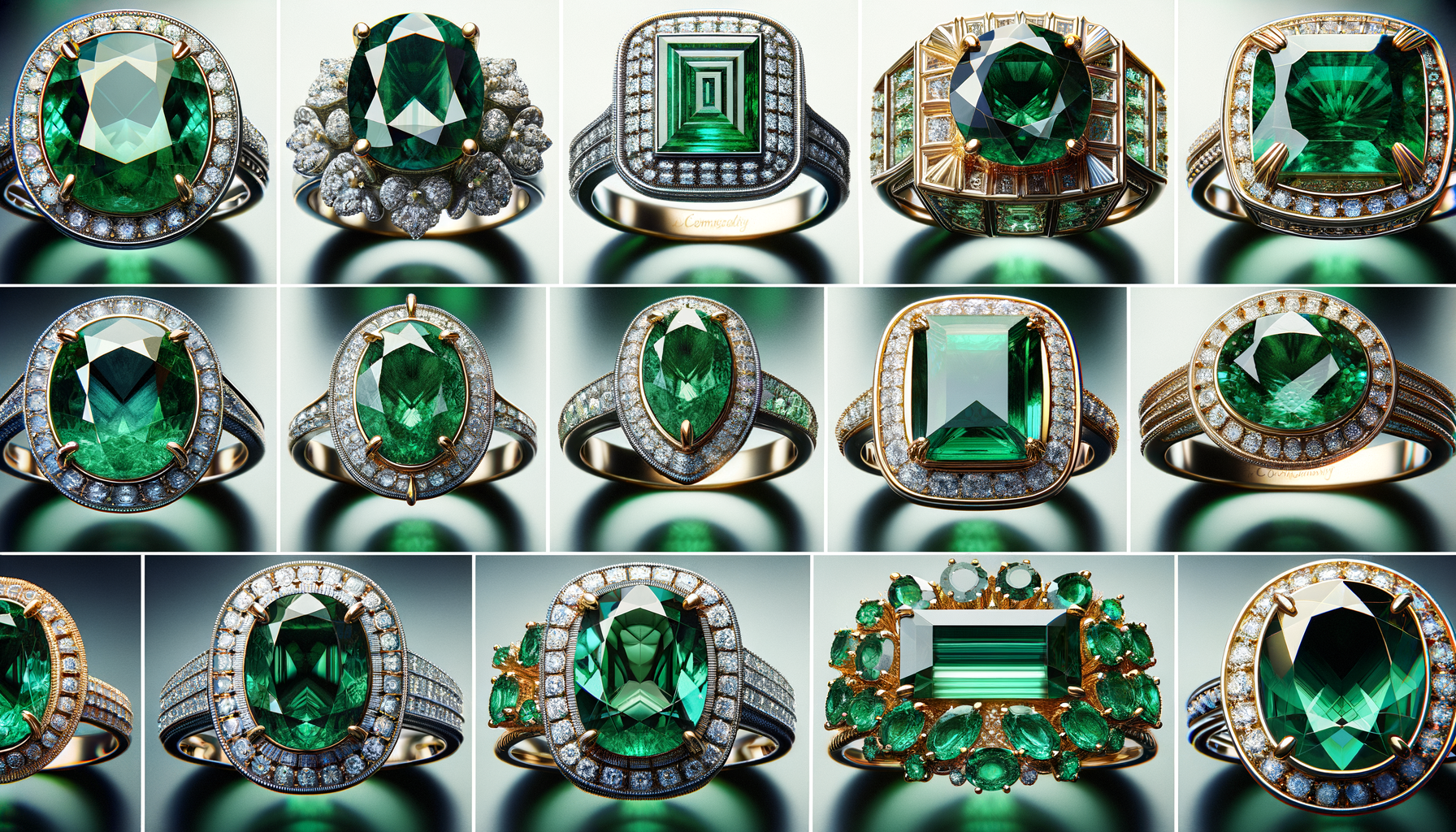
Emerald Rings: A Guide to Buying with Confidence
History and Significance of Emeralds
Emeralds have captivated human imagination for centuries, with their vibrant green hue symbolizing renewal and growth. The allure of emeralds dates back to ancient civilizations, where they were cherished by royalty and adorned by the elite. In ancient Egypt, emeralds were considered a symbol of eternal life, often associated with the goddess Isis. The Incas and Aztecs of South America also revered emeralds, considering them a sacred stone. This rich historical background adds layers of significance to emerald rings, making them more than just a piece of jewelry but a connection to a storied past.
The symbolism of emeralds extends to various cultures and traditions. Often associated with Venus, the goddess of love and beauty, emeralds are believed to bring harmony and fidelity to relationships. This makes emerald rings a popular choice for engagement and wedding rings. The stone’s vibrant green color is also linked to nature and fertility, making it a perfect gift for those who appreciate the natural world. Understanding these cultural and historical contexts enhances the appreciation of emerald rings and informs buyers about the deeper meanings behind their purchase.
Factors to Consider When Buying Emerald Rings
When purchasing an emerald ring, several factors should be considered to ensure a wise investment. The quality of an emerald is primarily determined by its color, clarity, cut, and carat weight, often referred to as the four Cs. The color is the most crucial factor, with the finest emeralds exhibiting a deep, vivid green with even saturation. Clarity is also important, though emeralds typically contain inclusions, sometimes called ‘jardin,’ which are natural and can add character to the stone.
The cut of an emerald affects its brilliance and how light reflects within the stone. A well-cut emerald enhances its color and minimizes visible inclusions. Carat weight, while significant, should be considered alongside the other three Cs to determine the overall quality and value of the stone. Additionally, the setting and metal used in the ring can impact its appearance and durability. Gold and platinum are popular choices, each offering a different aesthetic and level of resilience. Buyers should also consider the origin of the emerald, as stones from Colombia, Zambia, and Brazil are renowned for their quality.
Comparing Natural and Synthetic Emeralds
In the world of gemstones, understanding the difference between natural and synthetic emeralds is essential for making an informed purchase. Natural emeralds are formed over millions of years under specific geological conditions, making each stone unique. Synthetic emeralds, on the other hand, are created in laboratories and possess the same chemical composition as natural emeralds. While they offer a more affordable option, synthetic emeralds lack the historical and emotional significance of their natural counterparts.
When deciding between natural and synthetic emeralds, buyers should consider their personal preferences and budget. Natural emeralds, with their distinctive inclusions and color variations, are often more valued by collectors and those seeking a connection to the earth’s natural processes. Synthetic emeralds, however, provide a cost-effective alternative for those who appreciate the aesthetic qualities of emeralds without the premium price. Regardless of choice, understanding the origins and characteristics of the emeralds ensures a purchase that aligns with the buyer’s values and expectations.
Caring for Your Emerald Ring
Owning an emerald ring comes with the responsibility of proper care to maintain its beauty and longevity. Emeralds are relatively soft compared to other gemstones, making them more susceptible to scratches and damage. To protect an emerald ring, it is advisable to remove it during activities that may expose it to harsh chemicals or physical impact, such as cleaning or sports.
Regular cleaning is essential to keep the emerald sparkling. A gentle cleaning solution of lukewarm water and mild soap can be used, along with a soft brush to remove dirt and oils. It is crucial to avoid ultrasonic cleaners and steamers, as they can cause damage to the stone. Additionally, storing the ring separately from other jewelry can prevent scratches and maintain its pristine condition. By following these care guidelines, an emerald ring can remain a cherished piece for generations.
Choosing the Right Style for You
Emerald rings come in a variety of styles, each offering a unique expression of personal taste and style. From classic solitaires to intricate vintage designs, the choice of ring style should reflect the wearer’s personality and lifestyle. Solitaire emerald rings, with their simple elegance, highlight the stone’s natural beauty and are perfect for those who prefer a timeless look. Vintage-inspired designs, often featuring intricate metalwork and additional gemstones, offer a romantic and nostalgic appeal.
For those seeking a modern twist, contemporary designs incorporating geometric shapes or mixed metals provide a fresh take on traditional emerald rings. When selecting a style, consider the intended purpose of the ring. Engagement rings, for example, may benefit from a classic design, while a fashion ring allows for more creative expression. Ultimately, the right style is one that resonates with the wearer and complements their individuality.

